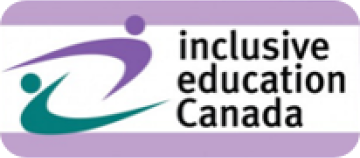

Notre vision consiste en un système éducatif dans lequel chaque apprenant est pleinement intégré, valorisé et inclus. Des programmes d’éducation de la petite enfance à l’éducation postsecondaire, en passant par les occasions d’apprentissage continu, tous les apprenants, y compris ceux en situation de handicap (intellectuel et autres), participent pleinement aux activités de leurs pairs. Grâce à un soutien individualisé, à une reconnaissance de leur dignité et à une approche fondée sur le respect, chaque apprenant peut atteindre son plein potentiel et mener une vie enrichissante, pleine de sens et répondant à son besoin d’appartenance.
Inclusive Education Canada
Inclusive Education Canada (IEC) advocates that schools and classrooms within education systems create inclusive, welcoming and supportive learning environments for all students. IEC provides information and news for parents, families, educators and communities committed to transforming schools into inclusive spaces where diverse learners can succeed. We work to inspire, guide, and empower individuals and organizations to make inclusive education a reality.
Our Vision
Our vision is an education system where every learner is fully embraced, valued and included. From early childhood programs to post-secondary education and lifelong learning opportunities, diverse learners, including those with intellectual and other disabilities, are engaged meaningfully alongside their peers without disabilities. Through personalized support, dignity, and respect, every learner can reach their full potential and enjoy a life enriched by belonging and purpose.
What is Inclusive Education?
Inclusive education recognizes and celebrates the diversity of all students. Students learn in their neighbourhood schools where all learners, regardless of ability or background, participate with same-age peers in common learning environments so they can succeed academically, socially, and emotionally. Students and their teachers are provided the necessary support to succeed, allowing them to contribute meaningfully to their local school community.


Right to Inclusive Education
In Canada, the right to education is enshrined in provincial/territorial education acts. It is also guaranteed under human right laws in our country. Canada also ratified the United Nations Convention on Rights of Persons with Disabilities (CRPD), which prohibits discrimination against people with disabilities and mandates the right to inclusive education. These are foundational pieces that guide our work.

Inclusive Education Canada has worked with our partners to build a dedicated resource hub which provides foundational, concise and practical information on inclusive education strategies and practices in Canadian schools and classrooms. It is designed to serve teachers, school leaders and parents/families. Our goal is to share the experiences and knowledge of our contributors with those beginning the journey to inclusion.
We invite you explore our site, Source for Inclusive Education and join our effort to make Canadian schools inclusive for all learners.

Inclusive Education Canada is funded by Inclusion Canada, a national federation that works to advance the full inclusion and human rights of people with intellectual disabilities and their families. Inclusion Canada’s work extends beyond inclusive education to include access to healthcare, legal capacity, income security, and more. Visit the Inclusive Canada website to learn more.

Support Inclusive Education Canada
If you are passionate about inclusive education and want to support our efforts financially, please consider taking action and making a donation. Your support will allow us to engage educators, families, and communities and share essential tools and knowledge for creating inclusive learning environments in Canadian schools




![[Webinar] Advancing Inclusive Education: Global Perspectives](https://static.wixstatic.com/media/f3a50a_90d720ac6c1b4bc1858821ea9b368840~mv2.png/v1/fill/w_334,h_250,fp_0.50_0.50,q_35,blur_30,enc_avif,quality_auto/f3a50a_90d720ac6c1b4bc1858821ea9b368840~mv2.webp)
![[Webinar] Advancing Inclusive Education: Global Perspectives](https://static.wixstatic.com/media/f3a50a_90d720ac6c1b4bc1858821ea9b368840~mv2.png/v1/fill/w_306,h_229,fp_0.50_0.50,q_95,enc_avif,quality_auto/f3a50a_90d720ac6c1b4bc1858821ea9b368840~mv2.webp)














